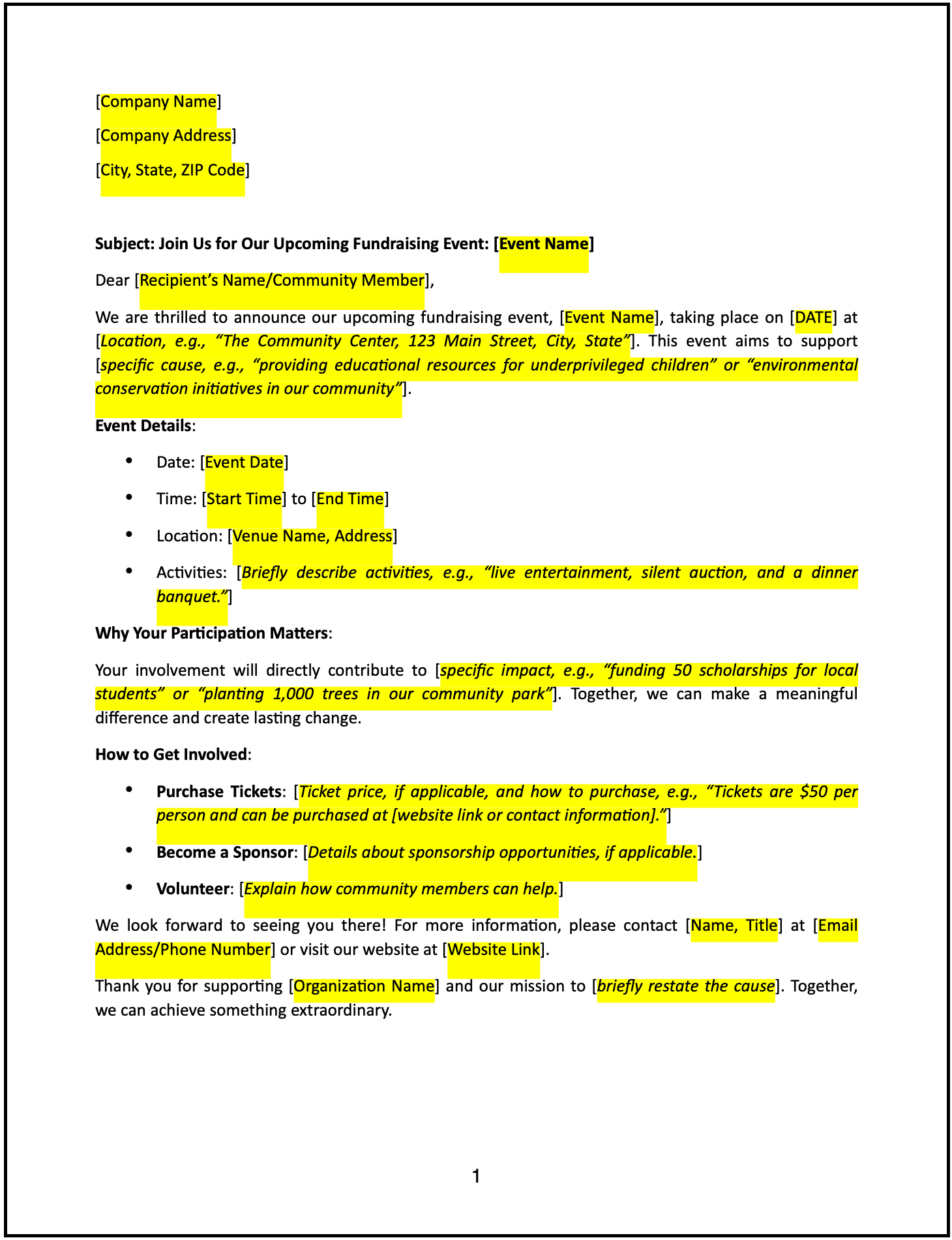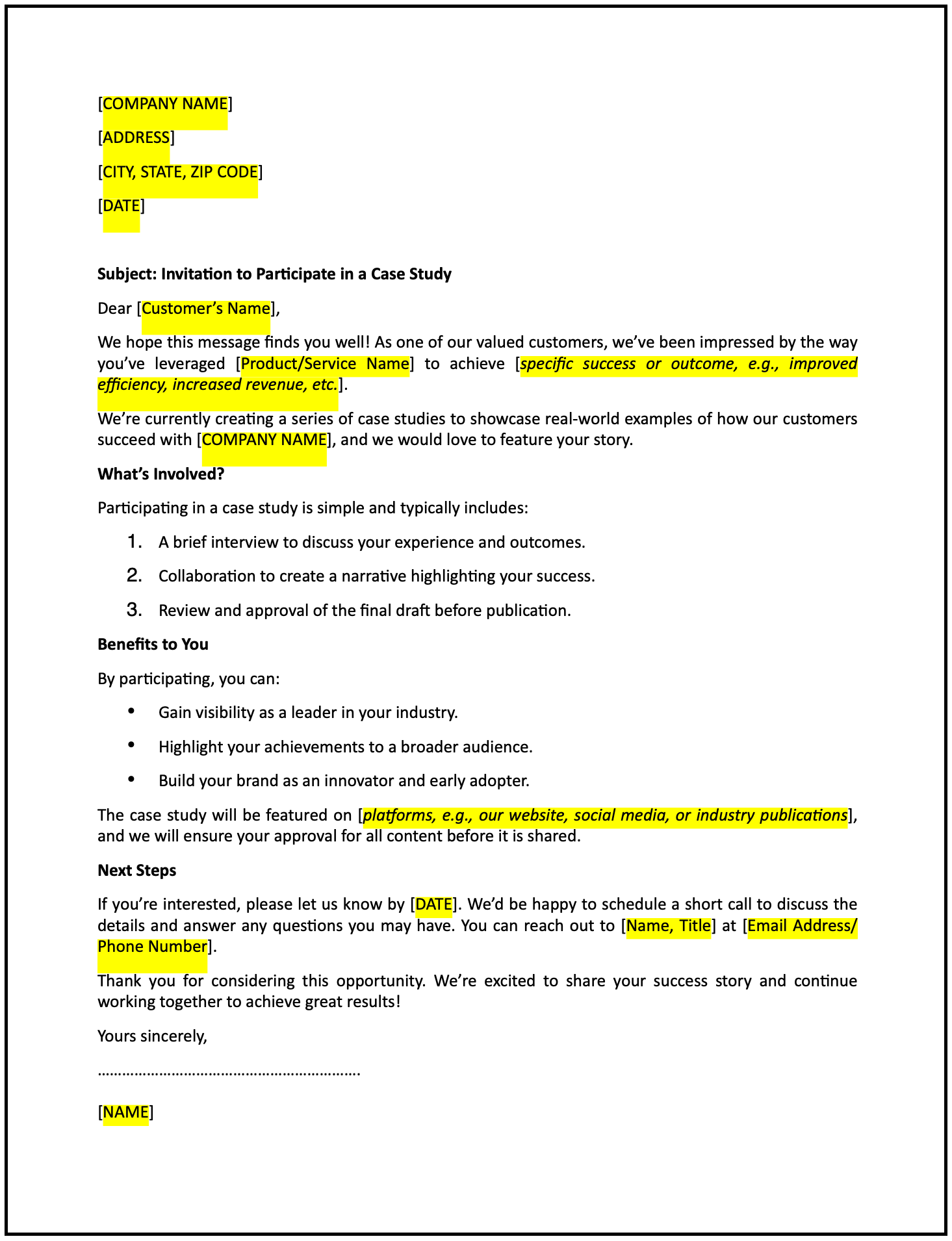Proposal letter for dispute resolution framework: Free template

Proposal letter for dispute resolution framework
A proposal letter for a dispute resolution framework is a professional way to introduce a structured approach to managing conflicts in a business relationship. This letter outlines the framework’s key elements, highlights its benefits, and fosters collaboration to resolve disputes efficiently.
How to use this proposal letter for dispute resolution framework
- Open with context: Begin by referencing the relationship or agreement and the need for a formal dispute resolution framework.
- State the purpose: Clearly outline the objective of the framework and how it aims to address disputes constructively.
- Describe the framework: Provide an overview of the proposed process, including steps like negotiation, mediation, or arbitration.
- Highlight benefits: Emphasize how the framework improves efficiency, minimizes costs, and preserves the relationship.
- Reference applicable standards: Mention industry practices, legal standards, or contractual obligations that support the framework.
- Invite collaboration: Encourage the recipient to review the proposal and provide input to tailor the framework to mutual needs.
- Maintain a professional tone: Ensure the letter is respectful, clear, and focused on fostering cooperation.
- Provide contact information: Include details for follow-up discussions or clarification if necessary.
Benefits of using a proposal letter for dispute resolution framework
This letter template ensures a structured and professional way to propose a framework while fostering collaboration and long-term benefits. Here’s how it helps:
- Promotes efficiency: A structured framework streamlines dispute resolution, saving time and resources.
- Preserves relationships: Constructive approaches minimize hostility and maintain business ties.
- Reflects professionalism: A well-crafted proposal reinforces your commitment to effective conflict management.
- Encourages mutual understanding: Collaborating on the framework ensures alignment and shared ownership.
- Reduces legal risks: A formal process minimizes potential escalation to costly litigation.
Tips for writing an effective proposal letter for dispute resolution framework
- Be specific: Clearly describe the proposed framework, including steps and methods for resolving disputes.
- Use professional language: Maintain a respectful and collaborative tone to foster engagement.
- Highlight mutual benefits: Emphasize how the framework supports both parties’ interests and objectives.
- Reference examples: Mention successful applications of similar frameworks in your industry, if applicable.
- Keep it concise: Focus on the key elements without overwhelming the recipient with unnecessary details.
Frequently asked questions (FAQs)
Q: What details should I include in this letter?
A: Include the purpose of the framework, an overview of its steps, benefits, and an invitation to collaborate on finalizing it.
Q: Should I personalize the letter?
A: Yes, addressing the recipient directly ensures clarity and demonstrates attentiveness.
Q: Who typically receives this letter?
A: Send the letter to a business partner, client, or counterparty involved in the agreement or relationship.
Q: How formal should this letter be?
A: The tone should be highly professional and collaborative, focusing on mutual benefits and resolution.
Q: When should this letter be sent?
A: Send the letter when conflicts arise frequently or when establishing a new agreement that could benefit from a framework.
Q: Can this letter include a draft agreement?
A: Yes, attaching a draft framework for review and input enhances clarity and efficiency.
Q: Is acknowledgment from the recipient required?
A: While not mandatory, requesting feedback or confirmation ensures engagement and progress.
This article contains general legal information and does not contain legal advice. Cobrief is not a law firm or a substitute for an attorney or law firm. The law is complex and changes often. For legal advice, please ask a lawyer.


